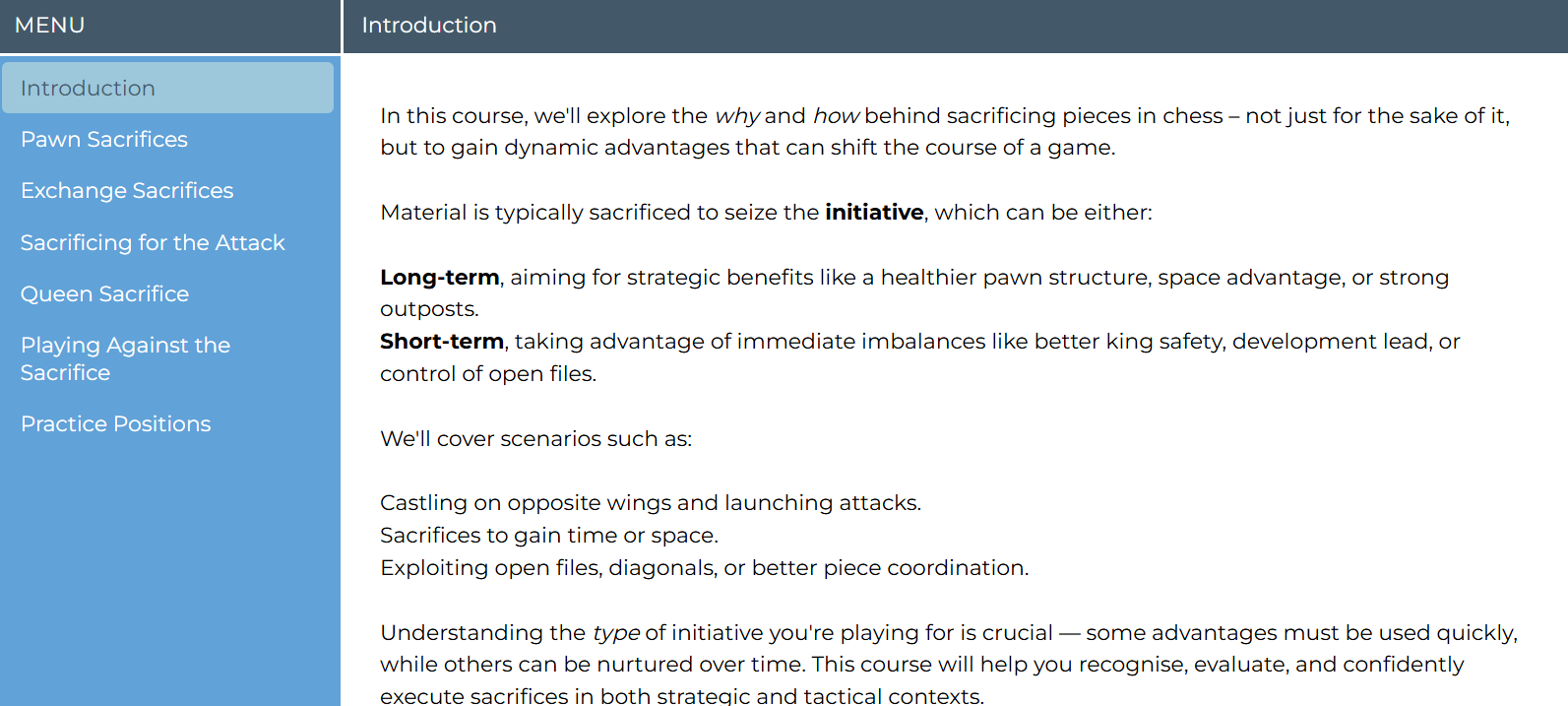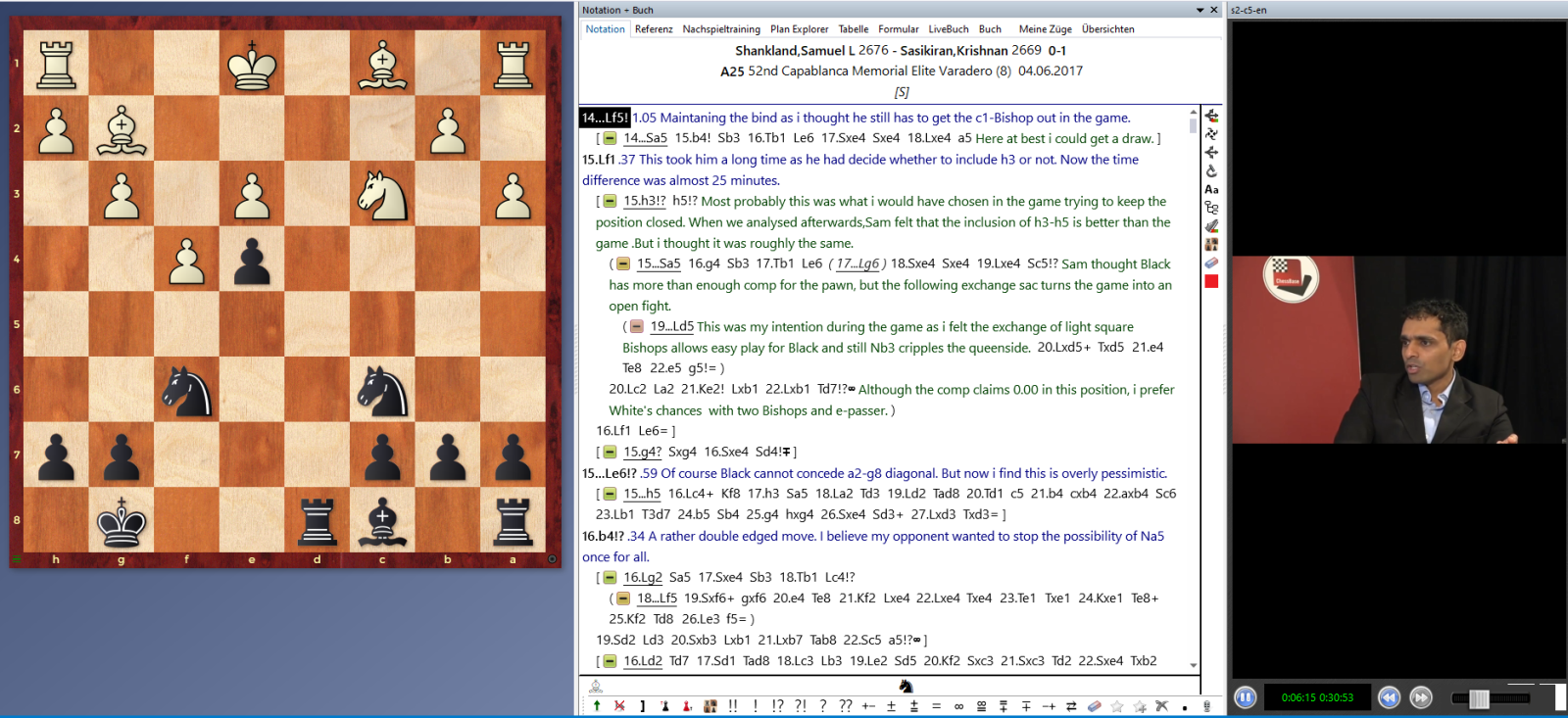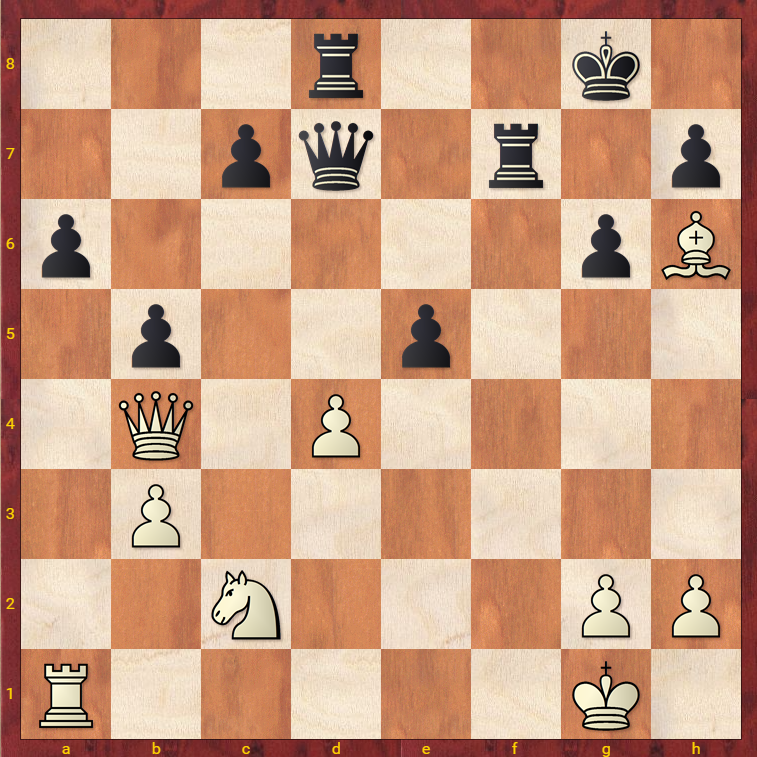The author is an Indian grandmaster with a peak ELO rating of 2720. He won a gold medal at the 2006 Asian Games and a bronze medal at the 2014 Olympiad. He also served as second to former world champion Vishy Anand in his title matches against Magnus Carlsen in 2013 and 2014. His active career has given him a wealth of experience from his own games, in which he has had the opportunity to make sacrifices himself. This is reflected in his choice of game examples, which are primarily drawn from his own experience.
Structure and didactic design
The Fritz Trainer has a clear structure and logical design, making it suitable for a broad target group. This enables the material to be presented to beginners without overwhelming them.
In addition to a brief introduction to the definition of a sacrifice and various theoretical concepts that should be understood as absolute prerequisites, the course guides learners through various dimensions of sacrificial play. Starting with a simple pawn sacrifice, moving on to a exchange sacrifices (giving a rook for a knight or a bishop) and ending with sensational queen sacrifices, learners are guided step by step and tested with practical examples. Each lesson is preceded by theoretical ideas, which are then applied in practice and examples.
The structure is very well thought out, as with each subsequent chapter the “price” for the sacrifice and the associated material investment increases, which also increases the responsibility to obtain or maintain value for the sacrificed material.

On this 60 Minutes renowned and successful coach Adrian Mikhalchishin shows you openings with early exchange sacrifices. These openings enrich your repertoire, improve your chess, and give you an opportunity to witness the development of modern chess theo
Free video sample: Introduction
Target group and requirements
In my view, the explanations in the videos are aimed at a significantly stronger audience if one seeks to gain the maximum benefit. To understand the topic of sacrifices, it is important to treat a pawn, exchange, piece or queen sacrifice not just as a material decision, but as one of many positional factors that shift over the course of a game. This requires not only an overview of various positional elements, but also an understanding of how these factors interact — constantly working together or against each other.
Free video sample: Sacrificing a Pawn for Initiative
If you give a pawn to speed up your development or to prevent the opponent from castling, you are trading the material factor for development or king safety. In doing so, you obtain compensation for the invested material. This is what distinguishes a sacrifice from a blunder: in a sacrifice, clear compensation is the goal.

The art of sacrificing lies in correctly assessing the return for the material invested, so that the compensation is at least sufficient. The ideal sacrifice is one that overcompensates for the investment or allows the advantage to be converted into a different form (for example, winning a better minor piece or reaching a superior endgame). In this respect, the course stands out through the grandmaster’s explanations and analyses, which make this logic clearly visible.
The positional exchange sacrifice is one of the most powerful and fascinating strategic weapons in chess. On this DVD Sergey Tiviakov explains why the positional exchange sacrifice is such a strong weapon and how to use it.
However, it is precisely this foundation required for the course that also makes it quite demanding. This opens the Fritz Trainer to an audience beyond typical club level and makes it appealing for a range of playing strengths. In my view, this is the course’s greatest value, as the explanations offer deep insight into the thinking of top grandmasters.
Additional materials and practical tools
In addition to the video lessons, the Fritz Trainer contains extensive additional material:
- Theory chapters with key points and explanations
- Exercise positions

It is positive that the author uses his own games to illustrate the theme, which demonstrates understanding and experience in these types of positions. However, the number of exercise positions feels somewhat low given the structure of the course. With five chapters, providing only four training positions is a bit sparse. It would have benefited the course to also draw on games by other players and offer the audience additional practical examples to work through.
In this insightful video course, Grandmaster David Navara shares practical advice on when to calculate deeply in a position — and just as importantly, when not to.
Free sample video: Introduction
Free sample video: Invisible moves
Conclusion: A strong contribution to a complex topic
With “The Art of Sacrificing,” Krishnan Sasikiran offers a valuable contribution to the highly complex topic of sacrifice play in chess, showing how different positional factors can be weighed against one another. With numerous key points that serve as prompts during one’s own games, the course provides a well-structured didactic framework, introducing the topic step by step while gradually increasing the material risk involved. The recommended playing strength naturally follows from the knowledge required to extract maximum benefit from the course.
Overall Impression: 4/5
Positive:
✔ A complex topic broken down systematically
✔ Clear course structure
✔ Concise, to-the-point explanations
✔ Practical game examples from the author’s own play
Negative:
– Very challenging for absolute beginners without an overview of key positional factors
– Too few training positions
About the author:
 Krishnan Sasikiran is a chess Grandmaster from India, the second Indian to reach 2700 Elo after former World Champion Vishy Anand. His peak Elo was 2720 (2012) which made him number 21 in the world rankings. Asian Games gold medallist 2006 and Olympiad Bronze medallist from Tromso, Norway 2014, Sasikiran has been one of the key members of the Indian national team from 1998 to 2022 winning several medals for his country over more than two decades. He has won many closed and open events, and assisted Vishy Anand as a second for his matches against Magnus Carlsen in 2013 (Chennai, India) and 2014 (Sochi, Russia).
Krishnan Sasikiran is a chess Grandmaster from India, the second Indian to reach 2700 Elo after former World Champion Vishy Anand. His peak Elo was 2720 (2012) which made him number 21 in the world rankings. Asian Games gold medallist 2006 and Olympiad Bronze medallist from Tromso, Norway 2014, Sasikiran has been one of the key members of the Indian national team from 1998 to 2022 winning several medals for his country over more than two decades. He has won many closed and open events, and assisted Vishy Anand as a second for his matches against Magnus Carlsen in 2013 (Chennai, India) and 2014 (Sochi, Russia).
